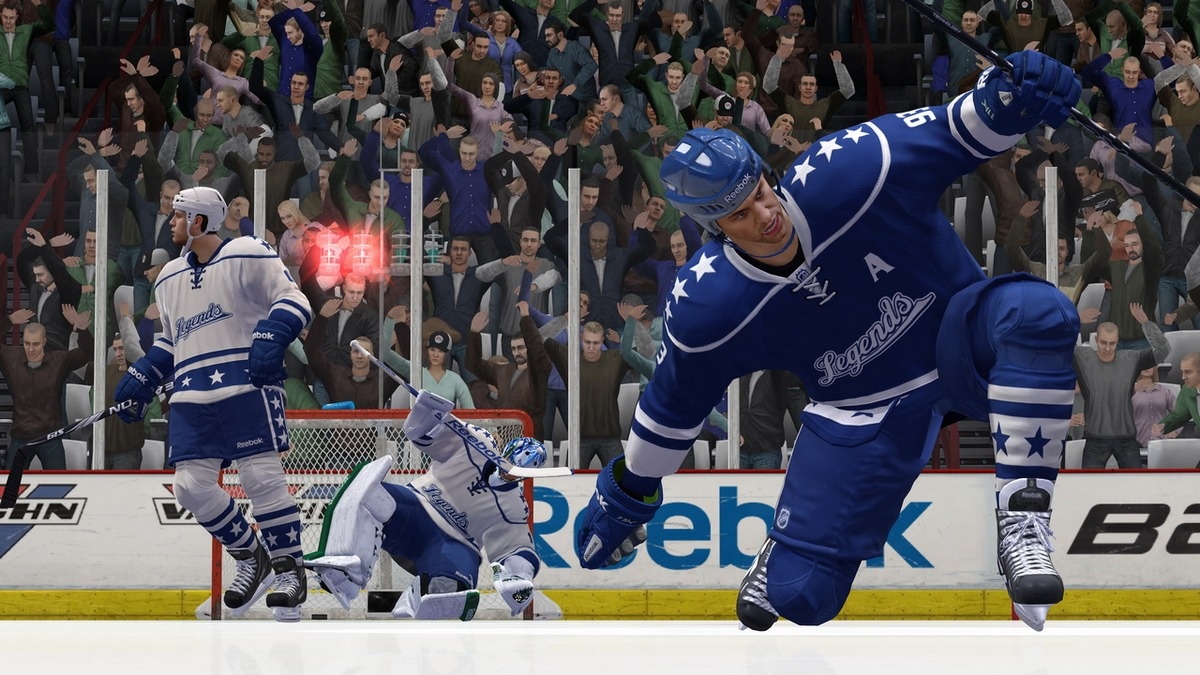NHL 13 might be the only game in town this year for hockey fans. The threat of an imminent lockout leaves the latest addition to the long-lived EA Sports franchise as the lone outlet for puckheads through what could be a long and lonely fall and winter of listening to talk about salary caps and revenue sharing instead of the more agreeable slap of stick against puck. Thankfully, neither Gary Bettman nor Donald Fehr is in the game, despite what EA Sports' famous tagline claims. But things are in a holding pattern here just as in the real NHL's labor negotiations. This is a bit of a stay-the-course release, although there are some impressive additions under the hood, such as a superb new skating physics engine and smarter artificial intelligence. Some issues with the AI and the lack of noteworthy new features are disappointing, however, making this something less than a revolutionary improvement over NHL 12.
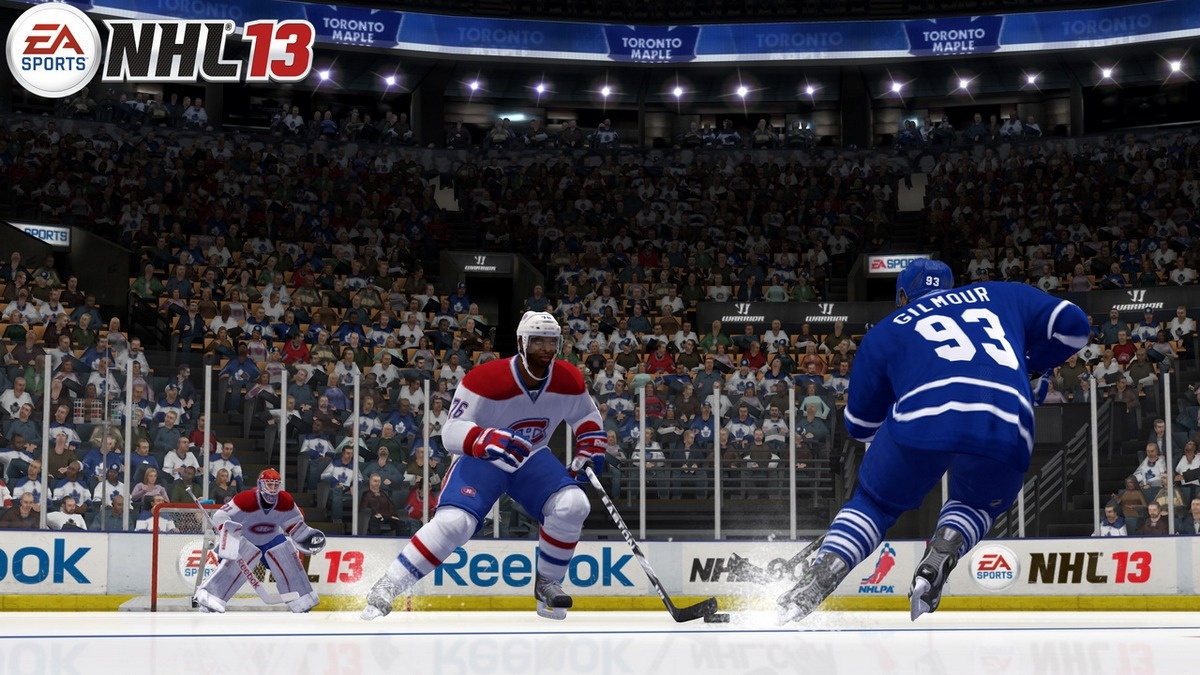
With all that said, it can't be denied that NHL 13 is a great hockey game when taken strictly on its own merits. Realism is the cornerstone of just about everything that happens on the ice. Players skate, shoot, slash, and brawl just like they do in the real NHL. Playing positionally sound hockey is a necessity, as is some sort of understanding of the actual game and the ins and outs of the NHL. If you need to Google what a diamond is or have no idea that cycling here does not involve wearing really tight shorts, you might want to do some reading before picking up a gamepad. This looks like an arcade hockey game, but it plays a lot like a simulation when the puck is dropped.
Features and frills are so numerous that you expect the game disc to bulge out of the box. There are modes of play for every taste. You can play single games, tournaments, and full careers, with most options being available online and off. As in NHL 12, you can take over franchises, set yourself up as a GM, create a player to lead from the junior leagues to the big leagues, take over a legend and try to lead him (or her--two female stars have been included this year for the first time alongside male greats like Gretzky and, um, Roenick) to greatness again in today's NHL, and much more.
Hockey Ultimate Team is back for a second season of card-collecting, micropaymenty goodness, and a new GM Connected mode of play supports up to 750 people playing in online leagues in nearly every role imaginable, from front-office boss to first-string goalie. The new NHL Moments Live borrows a trick from Madden and puts you in historic situations. There you have to either live up to what legendary stars like Gretzky and Gilmour accomplished in classic contests or finish off games by mimicking the highlight reels.
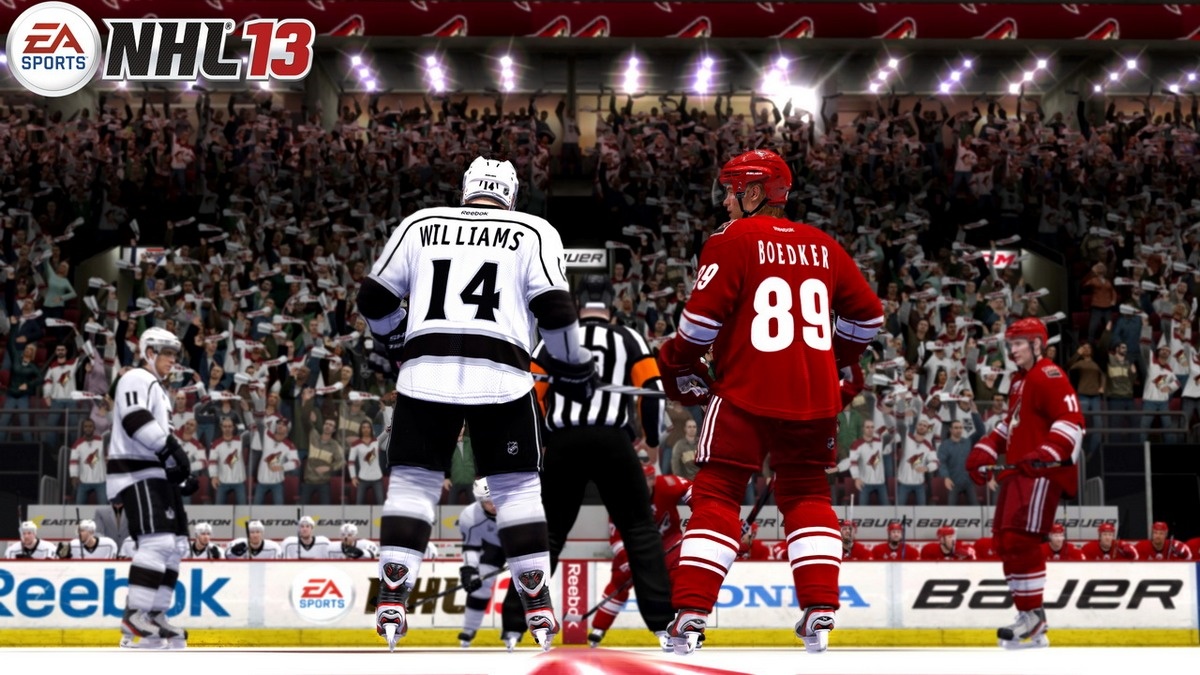
Another tweak is with the ratings system, which has been revised to rate players on a universal scale by position. This removes the confusing system from last year, which scored players based on how good they were in their individual roles. This inflated the overall ratings of marginal players who were good performers in their jobs, most notably tough guys. This year, goons have been dialed back to sensible numbers. Still, the ratings are odd in spots and still skew high for the most part. Whoever handled the ratings played some favorites. There is no other way to explain the declining Alex Ovechkin clocking a 93 as the second-best player in the game.
Some players also get dinged unfairly. It's hard to believe that Phil Kessel wound up with a lousy 86 after his 82-point season, especially when the likes of Mike Richards scored 87 with just 44 points in arguably his worst regular season in the NHL (nice ending, though). Stars are a little too dominant in general and have been given ratings more by history or reputation than current performance. Ryan Getzlaf and more than a few others haven't been this good or this motivated in the real NHL in a few years. Still, most players in the game perform in a true-to-life fashion.
Depressingly, none of the new features in NHL 13 amount to much. Changes to the standard modes of play include such dull additions as the ability to demand a trade in Be a Pro and some supposedly revised AI in the trade logic in Be a GM. Those AI revisions were insufficient, though; you can still rook the opposition into absurd trades by loading up on quantity to get quality. Revamped player ratings clear up some confusion but are not stop-the-presses material. The two new female "legends"--Hayley Wickenheiser and Angela Ruggiero--add an interesting twist to Be a Legend, although they add little glitz to the already disappointing lineup of hockey stars.
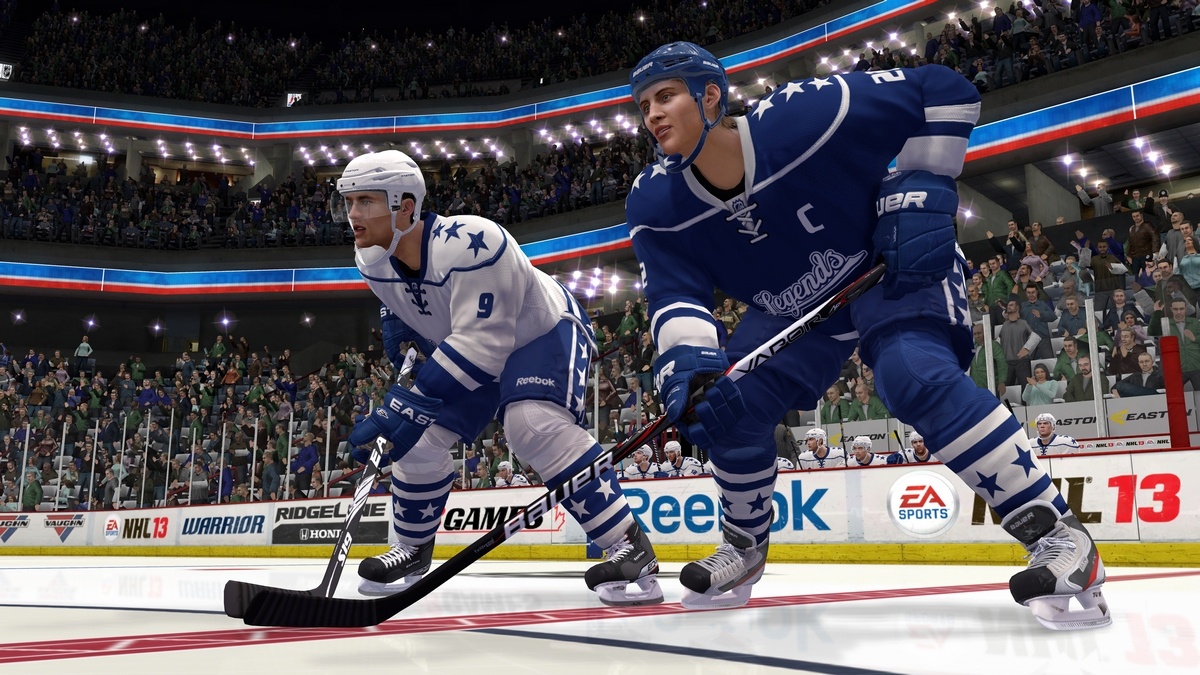
The handful of other additions--Doug Gilmour, Jari Kurri, and Dominik Hasek--won't exactly light the world on fire either, and some of last year's heroes, such as Borje Salming, have been dropped. This whole concept needs a massive expansion, with full old-time teams. GM Connected looks promising, but also rather intimidating. The idea of being in a league with hundreds of other people could well offer an entirely new multiplayer experience. It will take quite some time before this ambitious mode can be deemed a success or a failure, though. There are some technical problems as well, because the game moves very slowly, even when moving between stat screens in leagues.
NHL Moments Live is pretty much DOA. Just a few historic moments are present, and they are marred by having to re-create history with mostly modern lineups. So when you try to stage Doug Gilmour's big 1993 OT goal against the St. Louis Blues, you do so with linemates like Phil Kessel, not Dave Andreychuk, and try to put the puck past Jaroslav Halak, not Curtis Joseph. That takes a lot of the fun out of everything. Most of the moments are from the 2011-2012 season, which was a pretty forgettable year for the NHL. Still, you would think that EA Sports could have come up with better game choices. Nobody wants to watch the Columbus Blue Jackets play the Ottawa Senators once, let alone replay this sort of sporting-world snoozefest over and over again.
Thankfully, there is more to NHL 13 than rehashed and marginal new features. The most significant adjustments to the game have a big impact on how the game plays on the ice. Physics are greatly improved. Momentum, acceleration, and turning feel more natural, and you can also turn and skate backwards on demand now. You can also turn and skate backwards on demand now. All of this has a huge effect on how you skate, which is more realistic than ever before in that you build up to full speed, lose speed to turn, and can wind up off balance if you try fancy tricks with players who lack the agility to pull them off. Skating motions are translated right into the controller now, letting you feel explosive takeoffs, quick stops, and sharp turns. This has a considerable impact on the entire game. Natural skating leads to organic plays that make games feel fresher, like something that is really happening. You never know what to expect when you take off up the ice now.
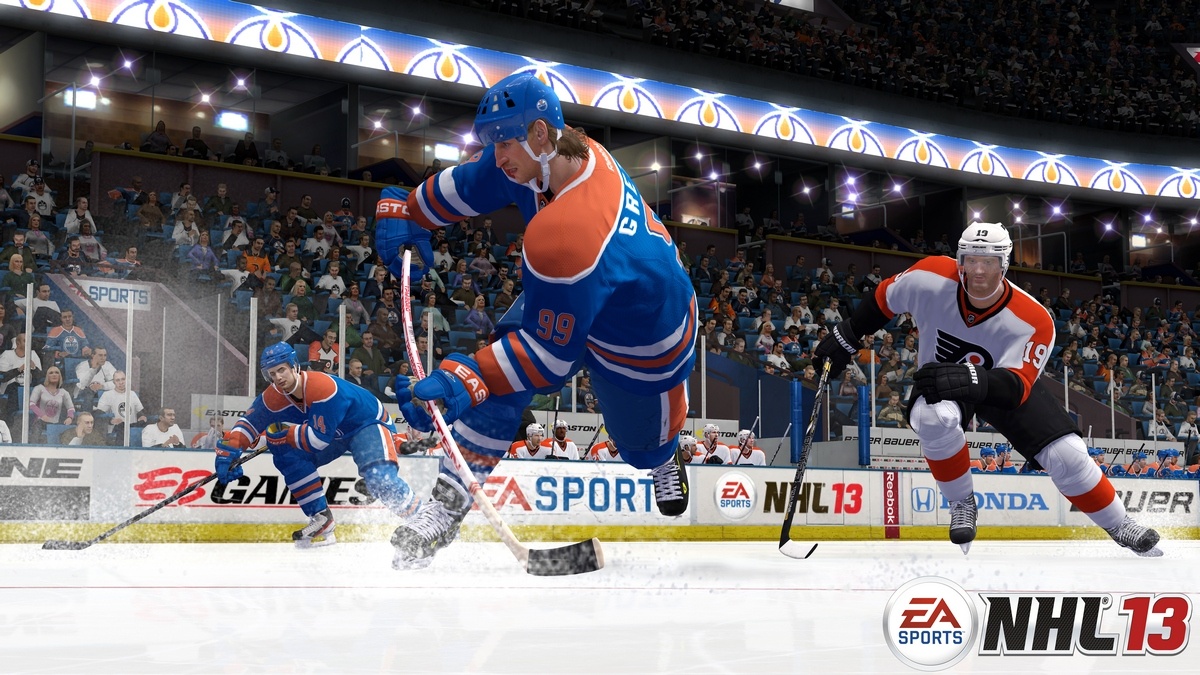
Players now react more smartly to events all over the ice. Teammates work into open spaces more often now, forwards cover for rushing defensemen, that sort of thing. More than ever before, you have to play real hockey here. You can't just race up the ice full speed all the time, pinball pass, and crash the net mindlessly, because the computer-controlled defenders will shred you. The same goes for playing defense. If you don't play positional hockey, clog up passing lanes, and stick close to the man you're supposed to be watching, the AI will spin you like a top.
It is actually tough to get used to at first. If you come into the game thinking arcade hockey, you soon realize that you need to slow things down a bit, develop plays, and probe for enemy weaknesses. There are just a couple of notable problems. Penalties are either too numerous or almost nonexistent, since there doesn't seem to be a happy medium in the slider settings. You either get loads of phantom stick fouls or virtually no penalties at all. Far too many pucks are wrapped around the net that should be cut off by your netminder. Still, if you know real hockey, you will experience many moments that will put a huge smile on your face. You can actually cycle the puck, for instance, and your AI teammates know what they're supposed to be doing. Only hockey geeks will get this, but it's incredibly satisfying to see it realized so effectively in a game.
All of this enhanced realism is a little too enhanced, though. AI players are so smart now that they can pull off impossible moves. These guys aren't just emulating Wayne Gretzky's famous credo about playing where the puck is going to be; they're channeling Nostradamus. Reaction times are blisteringly fast. Defensive coverage is remarkably blanketlike, even if you're up against some of the worst clubs in the league behind their own blue line. They react to loose pucks instantaneously. Play a perfect poke-check, and AI opponents often snatch the puck back up without losing a stride. Offensive pressure can be unrealistically relentless. Every club seems to attack constantly, with a brutal forecheck that is robotic in its efficiency. Make a mistake with enemy players on you in this smothering fashion, and you wind up bottled in your own end for lengthy stretches with opponents firing unlikely tape-to-tape passes all over the ice like they were running a power play on crystal meth.
You eventually adjust to this intensity and maybe even come to appreciate it somewhat, as it sure keeps you on your toes. Some of the more annoying aspects of the AI can also be mitigated by adjusting gameplay sliders. Knocking down the game speed a few notches helps a lot, as does dialing down passing. But there doesn't seem to be anything in the sliders that totally corrects the problems noted above. Playing with a team saddled with a mediocre goalie emphasizes the AI issues even more. You won't last long running the Maple Leafs before making the long-rumored Roberto Luongo trade, for instance. The major positive of all this is that you should have a tough game to play for a good long time. But the difficulty can seem somewhat fake, which can lead to frustration. Giving up a goal to a hard-working opponent running a good forechecking scheme is one thing; giving up a goal to an opponent with forecheckers more aggressive and unstoppable than anything in the real world, who can anticipate passes and zip the puck around like it's on a string when in your zone, is something else entirely.
Presentation stays the course. NHL 13 looks and sounds nearly exactly the same as NHL 12. Not that there's anything (too) wrong with that. Games come off as slick and pretty as the average NHL TV broadcast. Player faces are picture-perfect, the animations are entirely lifelike save for the odd hitch when a player falls down that evokes memories of bad rag-doll deaths in shooters, and arenas look like sparkling white palaces. As usual, the interface has been overhauled, and also as usual, it isn't particularly intuitive.
It looks very good this year, with a backdrop reminiscent of a sports news show. But you can't get where you want to go all that easily, and information is not presented well, especially in stat-heavy modes like Be a GM. Commentary isn't as attractive; you want to slug Gary Thorne and Bill Clement every few minutes for repeating some dumb cliche. And so many lines have been reused from last year's games that you hear things like the duo raving about how Luke Schenn is a cornerstone of the Maple Leafs' defense…even though he was traded to the Flyers in June. Audio effects are good, at least, and you do get a new lineup of mostly anonymous, mostly scruffy rock tunes to keep you from thinking during stoppages in play.
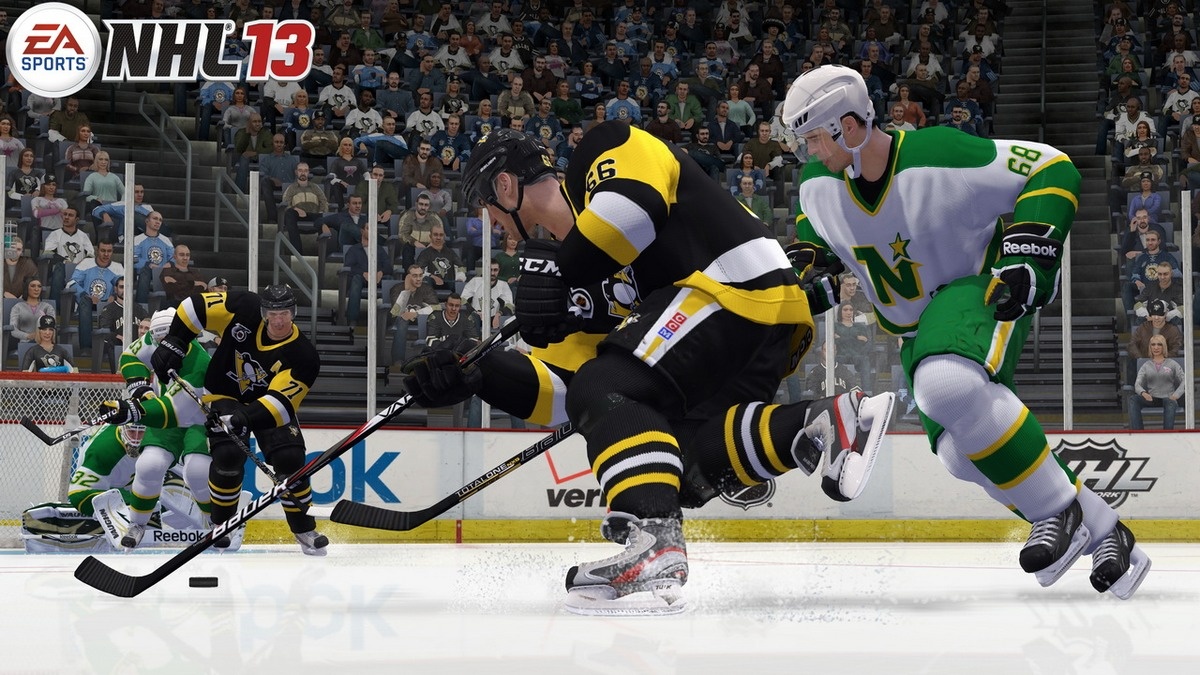
Hockey fans don't seem to be in for a very good year, with the NHL set to go on hiatus for what could be a very long time. NHL 13 will help fans deal with the absence of the real thing, although the game isn't any sort of generational leap over its predecessor. Sharp new skating physics and the advanced AI make this a different, more realistic game, but there are just enough aggravations here to take some of the shine off these otherwise impressive adjustments. The lack of any significant new features and the rather trivial additions to the old ones are another annoyance. Still, this is a great hockey game even without huge changes, and it remains a satisfying hockey fix that may just be needed this fall more than ever.
